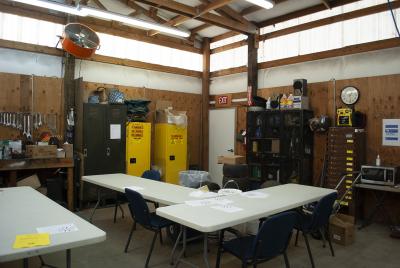Findings - 2021 Facilities Assessment Project
In 2021, the City of Corvallis conducted a Facilities Needs Assessment to study the condition and operational efficiency of its portfolio of public buildings. A total of 17 sites were ranked on a scale of 1 to 5, with 12 of the 17 sites having a ranking below 3.
The average ranking for a typical City building was 2.58.
The ranking examined many different areas, including: The assessment examined a few areas:
- The capacity of the existing facilities
- The locations and workflows of employees and public as they use these facilities
- Energy efficiency
- Safety
- Gender equity and accessibility
- Population growth impacts
- Changes in regulations and technology
- New approaches to providing services
Common Challenges
While each location has challenges and concerns unique to the type of services delivered from that building, there were common problems across all sites. Nearly half of City facilities are over 50 years old, and only two were constructed within the last 20 years. The majority of the facilities do not support modern operations or current trends in sustainable, resilient, equitable work places.
The second step the consultants took was to determine the facility size that is necessary to provide adequate space for the City’s staff, materials, assets, and storage needs 20 years from today. This analysis resulted in square footage projections by building and by department for those buildings that house more than one department. The consultants found that City buildings are undersized today and that a 77% increase in space across the portfolio was needed to bring the facilities up to industry standards. Another 8% increase in space will be needed to accommodate service delivery in 20 years, for a total deficiency of 85%.
The third step in the consultant process was the development of alternative solutions to address the challenges they uncovered. A set of guiding principles were drawn from the community and City Council’s goals and objectives for Corvallis, as represented in the Imagine Corvallis 2040 Vision and the City Strategic Operational Plan Policy Priorities. An alternative was not considered viable if it did not align with the criteria in the Guiding Principles. The consultants further reviewed the viable options for construction viability and cost to arrive at a recommended solution per location.
The final step in the Facility Needs Assessment process was the development of a prioritization framework for the facility solutions. This led to the list of projects that are moving forward today.
The conclusion of this work effort was a Citywide Facilities Strategy, which contains recommendations for a set of conceptual-level facility projects to address the deficiencies noted through the assessment.
Click here to go back to the Facilities Needs Assessment page.
| Mark Shepard | City Manager | 541-766-6418 | city.manager@corvallisoregon.gov |
